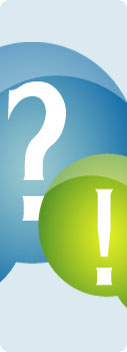 |
 |
|
|
 |
|
| |
EHR
(Electronic Health
Records). EHRs are digital records kept by your doctor's
office, the facilities where you are a patient or your insurance
company. This technology allows for easy tracking of a patient's
entire health and medical history in a computerized, electronic
format. The information is now more easily retrievable.
|
|
| |
|
|
| |
EMR
(Electronic Medical
Records) same as EHR (Electronic Health Records)
|
|
| |
|
|
| |
E-Prescriptions
E-prescriptions are prescriptions generated
on a computer created by the healthcare provider and then sent
through the computer directly to your pharmacy. Instead of writing
the prescription, the healthcare provider can enter it into
the computer. This transmission should be sent through a secure
and private network and not over an open Internet as an email.
Printing capabilities are still available and not lost with
this feature. |
|
| |
|
|
| |
|
|
|
|
| |
|
|
|
|
| |
HHS
(The Department of
Health and Human Services). A U.S. Governmental body for
protecting the health of all Americans and providing essential
human services, especially for those who are least able to help
themselves. |
|
| |
|
|
|
|
| |
HIT
(Health Information
Technology). (HIT) Relates to information technology being
used to disseminate and manage health information from patients
to providers and insurers across computerized systems. HIT can
help prevent medical errors, decrease paperwork, reduce health
care expenses and improve the quality of health care. |
|
| |
|
|
|
|
| |
ICD-10-CM
(International Classification
of Diseases, 10th Revision, Clinical Modification).
ICD-10-CM was developed as a replacement for Volume 3 of ICD-9-CM
codes. They represent a uniform, international classification
system of describing diagnoses (for example: coding for diseases,
abnormal findings, symptoms and injury diagnoses). This coding
system is used worldwide for statistics and insurance reimbursement
which enables other medical professional in the United States
and several other parts of the world to understand the diagnosis
the same way. ICD-10 coding accommodates a host of new diagnoses
and procedures with more than 141,000 new codes.
Medical billers and coders who use these codes
to report health care diagnoses and procedures will have to
use the replacement of the ICD-9-CM codes with the ICD-10
code set which has been mandated by The Department of Health
and Human Services, effective Oct. 1, 2014 changing from the
original implementation date of October 1, 2013. Medical billers
should begin to get training to be well-positioned for the
coding switch.
|
| |
|
|
|
|
|
| |
|
|
 |
|
| |
Meaningful
Use
Meaningful use describe objectives and rules
to be met during the implementation of electronic
health records (EHRs). The rules
include concepts such as ensuring privacy and security of patients'
records, improving patient care coordination,
and making sure patients have access to those digital records.
Meaningful Use reimbursement payments
Reimbursement payments are based on the amount
of Medicare-covered professional services rendered during
the year in question. To determine how much will be reimbursed,
payments are calculated by multiplying the submitted allowable
charges to Medicare by 75%, up to the capped amount for the
year. For example, to collect the full incentive payment of
$18,000, you will need to submit at least $24,000 in allowable
Medicare charges. Eligible physicians who were compliant in
2011 or 2012 received and will receive the full benefit of
the maximum payment of $44,000 expected to be paid through
Medicare participation. After 2013, the payment amount decreases
for subsequent years with no payments being made after 2016.
|
|
|
| |
|
|
|
| |
|
|
|
|
| |
|
|
|
|
| |
NCCI
(The National Correct
Coding Initiative). NCCI helps to reduce improper coding
which can resulting in improper payment of Medicare Part B claims
and Medicaid claims. This initiative also promotes national
correct coding methodologies. |
|
| |
|
|
| |
Templates
Forms designed for your practice/specialty
to obtain patient chief complaints, medical history and other
health care concerns. They are intended to reflect the needs
of your specialty. |
|
| |
EBS Medical Chart Solutions can customize
easy to use templates specific to the intended use for your
specialty!!
|
|
| |
|
|
|
|
| |
Web-Based-Software
Web-based software is an application that
can be accessed over a network, through the web browser. The
central server contains the software and database instead of
it being installed on the desktop system. You will have the
opportunity to access your business information at any time,
from anywhere in the world that the internet is available with
a username and password. |
|
| |
|
|
| |
Cloud
Solution
Of course we have the Cloud solution!
- This web-based system is more cost effective than a client-server-based
system as it requires less up-front costs. You eliminate the
expense of purchasing the hardware required for server setup
which can total as much as $80,000 depending on the size of
your office. Take the option of creating your own Cloud or use
EBS Medical Chart Solutions secure Cloud solution. We can handle
the maintenance, backup and any software changes required for
your practice. Also, we meet the Meaningful Use standards using
web-based EMRs. With the Cloud solution you can focus more on
your patients rather than worrying about maintaining your hardware
and backups. Get easier and faster access to your data.
|
|
| |
If you got the internet, you got
the Cloud! |
|
| |
|
|
|
|